ภาษาไทยกดที่นี่
Update: This is the digital rendering of the plan for expansion of highway no. 11 over the Ping River in Faham and Pa Tan sub-districts which has already been approved by authorities. “How will the traffic be in the future?” questioned Sapan Niwes group, who shared the image. 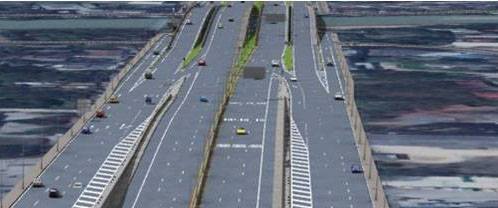 Our original story below discusses this, but we thought that it would be important for those potentially affected to see the one way slip roads, which will make crossing from each side of the bridge extremely difficult as seen in the image below, the original image was a tad misleading, as it shows the slip road extending beyond one lane and in fact falsely shows that it continues along the side of the river.
Our original story below discusses this, but we thought that it would be important for those potentially affected to see the one way slip roads, which will make crossing from each side of the bridge extremely difficult as seen in the image below, the original image was a tad misleading, as it shows the slip road extending beyond one lane and in fact falsely shows that it continues along the side of the river. 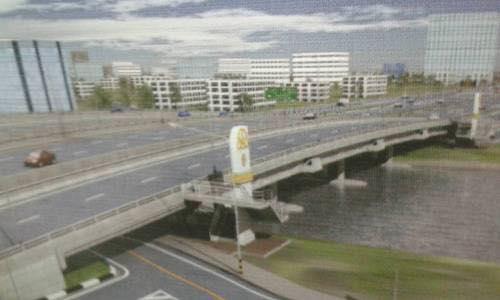 CityNews – Those of us who have driven past the Maejo Junction on the super highway have probably noticed the construction trucks that occupy the space on the roadside where large 50 year old mahogany trees used to stand. To most of us, this scene is just in the periphery of our vision, but for many thousands, this major development will greatly affect their ways of lives and access to parts of the city. Chiang Mai Construction has already signed a contract with the Department of Highways to construct a six-lane tunnel, which will be built under the junction, and the superhighway itself will be expanded into ten lanes.
CityNews – Those of us who have driven past the Maejo Junction on the super highway have probably noticed the construction trucks that occupy the space on the roadside where large 50 year old mahogany trees used to stand. To most of us, this scene is just in the periphery of our vision, but for many thousands, this major development will greatly affect their ways of lives and access to parts of the city. Chiang Mai Construction has already signed a contract with the Department of Highways to construct a six-lane tunnel, which will be built under the junction, and the superhighway itself will be expanded into ten lanes.
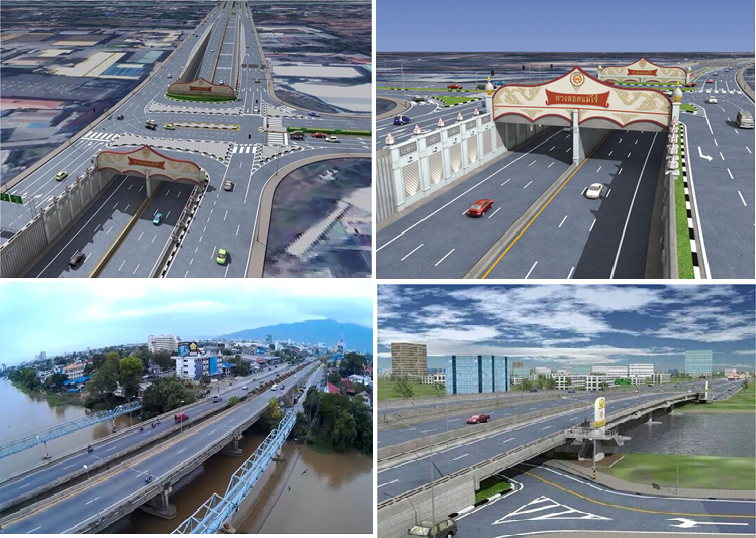
As the road heads towards the river, the current duo of two-lane bridges crossing the Ping River will also be expanded by a lane on each side, and two new bridges will also be built on each side with two lanes each (the Water Works Authority will move their two current water pipe bridges, further up and down the river). In total, there will be ten lanes of the traffic crossing the bridge. This 1,200 million baht project initiated by the Department of Highways has been highly criticised for questionable public hearings and the approval procedures of the construction plan. Although the project has compiled with all required hearings and checks, it is only recently that the overall design has come under scrutiny by citizens in the surrounding communities, mostly due to the efforts of a retired assistant professor of engineer at Chiang Mai University.
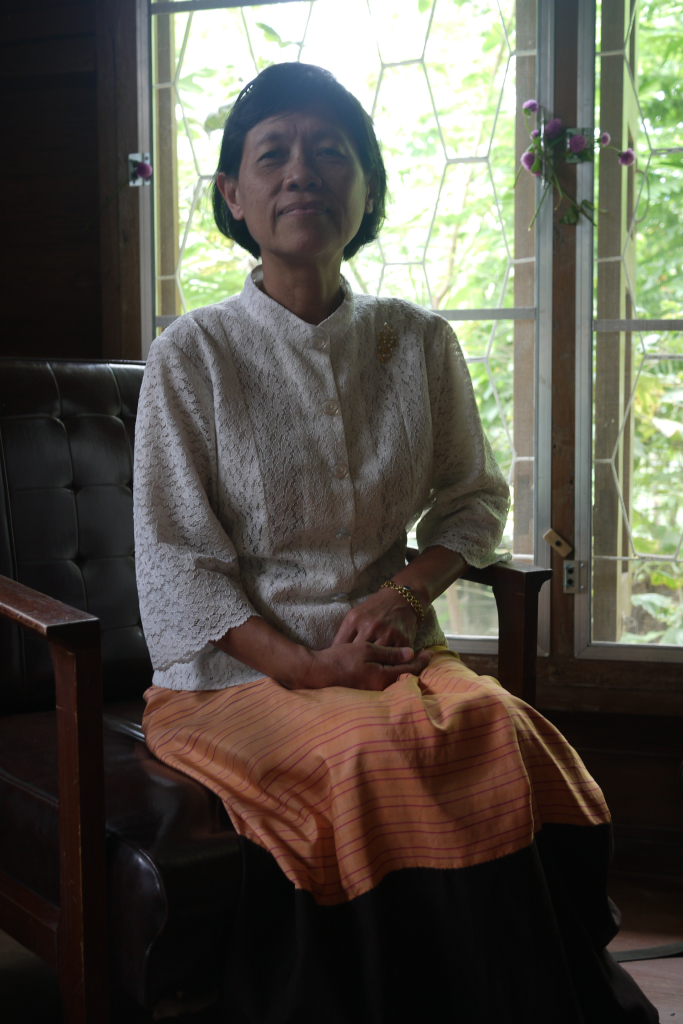
“We are the ones who will be the most impacted,” says Worrawimol Chairut, coordinator of the Raks Baan Raks Muang (Love the Home, Love the Town Group) and owner of a local business in the affected area. “But the public hearing was far from what it was supposed to be.” Worrawimol remembers a room packed with people, pamphlets with no substantial information, faded projected images that were too technical to understand, and a health and environmental impact report full of jargon that in language far from laymen’s terms. There was also no mention of any negative impact to the community and no explanation as to how their lives would change. After the public hearings were conducted four years ago, residents were not updated on the project until March 2015 when the construction contract was unexpectedly signed and the construction began. “Their deceitfulness raises a lot of questions in me. The way that this large, well-funded department goes about doing things is not suitable,” Worrawimol concluded wearily. Designs of the new structure itself is also problematic, “If this was an engineering exam for my students, I would have failed them,” said Associate Professor Wassan Jompakdee, Former Vice Dean of Chiang Mai University’s Engineering Faculty. As many residents have pointed out, there does not seem to be a need to expand the super highway into a ten lane ordeal, especially as it will all bottle neck a few kilometres down the road at the Nimmanhaemin Junction anyway, nor is there a need for an underpass under the Maejo Junction, especially since the Mae Jo turnoff will still be controlled by lights. “The only users who will benefit from this construction are the people who are using the superhighway, not the people who are driving to Maejo, or residents nearby,” said Assoc. Prof. Wassan. “The new design simply shows a lack of respect to the locals’ way of life,” he continued. The super highway will run without traffic lights through a tunnel. However, the first problem is that people driving in from or towards Mae Jo will still have to sit in traffic lights in order to enter the city, this will therefore not lessen the congestion for the thousands of commuters. The bigger question mark hovers over the expansion of the bridge from the current four lanes into ten lanes. This major expansion will leave only seven metres on each side of the highway for the sliproads on both sides of the bridge. Currently there are two lanes on the slip roads on each side of the bridge. This allows for people in San Phi Sua, Pa Dad, Fa Ham and even Wat Gate as well as other nearby communities along the Ping to easily enter and leave the city by driving under the bridge along the two-lane two-way roads. The new construction will only allow for one lane, which will make it a one-way system, and will require commuters to have to do u-turns at the Central Festival or the Mae Rim Junctions, both already highly congested.
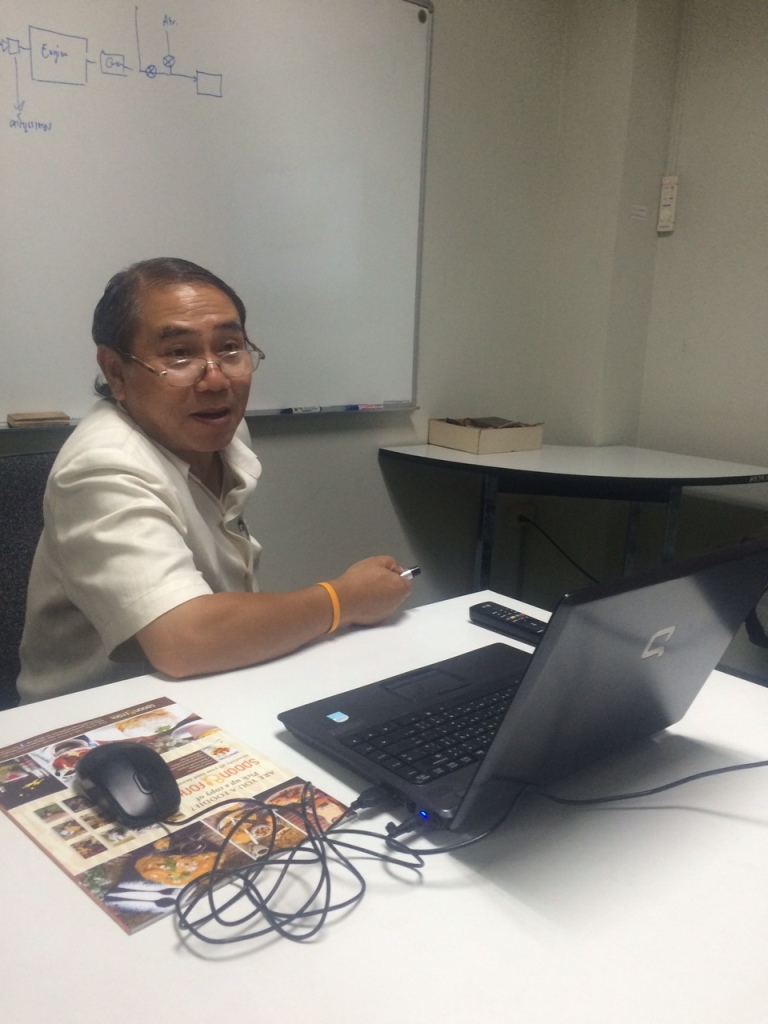
“Engineers who designed this bridge clearly have very little knowledge about the location and the needs of residents. Their focus is to allow people to drive speedily along the superhighways, but what will happen is that it will break up communities and cause huge problems to thousands of other daily road users. Although the superhighway is indeed the main road, the side roads are equally utilised by residents from many nearby communities, especially during rush hour,” said Assoc. Prof Wssan. “I have noticed that especially in the mornings, these side roads are highly trafficked with cars, bikes, and motorcycles, just as much so as the actual highway, so why are they not being prioritised, or even taken into consideration. Monks also walk along the side for their alms rounds early in the morning and children use it as their route to and from school.” Assoc. Prof. Wassan points out that with the disproportionate bridge expansion, the surrounding community’s waterfront access would also be completely blocked. “The waterfront here is culturally important for all the communities in the area. For loy krathong, people parade to this waterfront and celebrate for nine days and nights, the largest celebration in the city!” Overall, the Assoc. Prof. believes that the project is riddled with more cons than pros. “In the old days, bridges were built to bind communities together and allow people to walk to one another. Today, we have the capacity to build a ten lane bridge but we have forgotten its true purpose. People can no longer walk on the bridges. They are only used by cars. There are no dynamic elements to this design. There are no lanes for bicycles, no areas for planting trees (in fact, over 60 precious mahogany trees were cut down for the project so far) no leisure spaces set aside for activities. We are using old designs when the rest of the world has moved on and understands that bridges can become so much more than a speedy pass.”
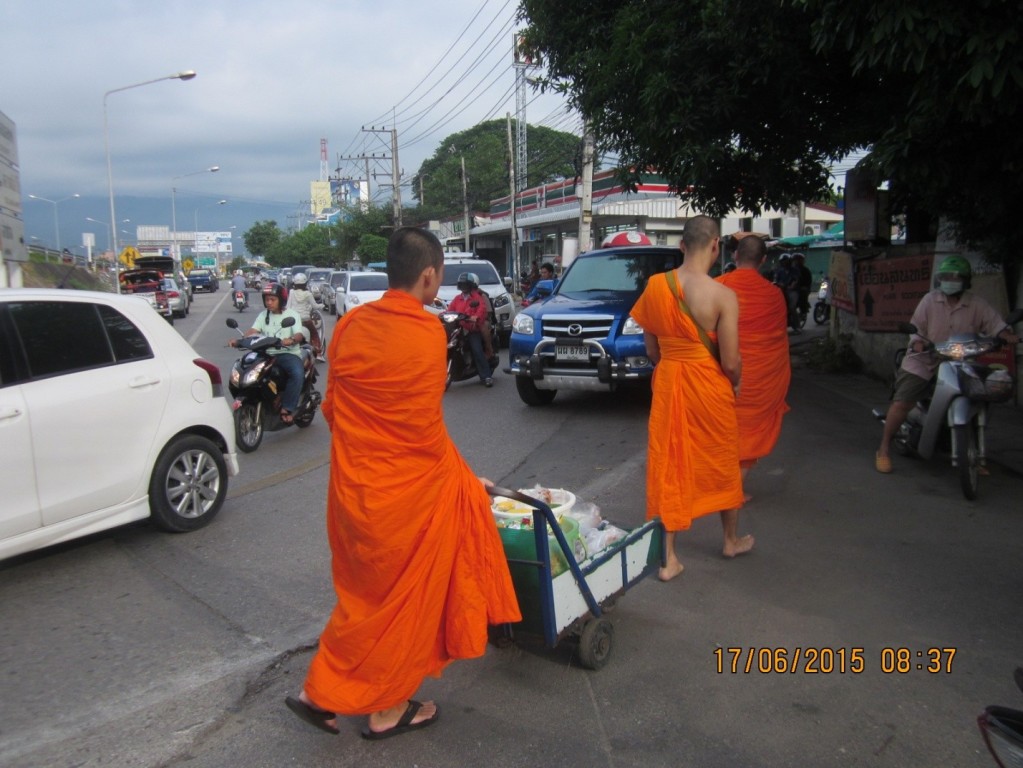
It’s too late to ban the construction entirely. The contract has been signed and the system is not flexible enough to cope with such a change. But Assoc. Prof. Wassan has come up with an alternative design that would make the new structure more compatible with the local communities’ needs, and one which will not cause the construction company to lose any financial interest or the Department of Highways too much face. He suggests that the Department give a lane on each side of the bridge for pedestrian use with a separate on-ramp. This adjustment will allow enough room for a two lane road, a pedestrian walkway, and a bicycle lane.
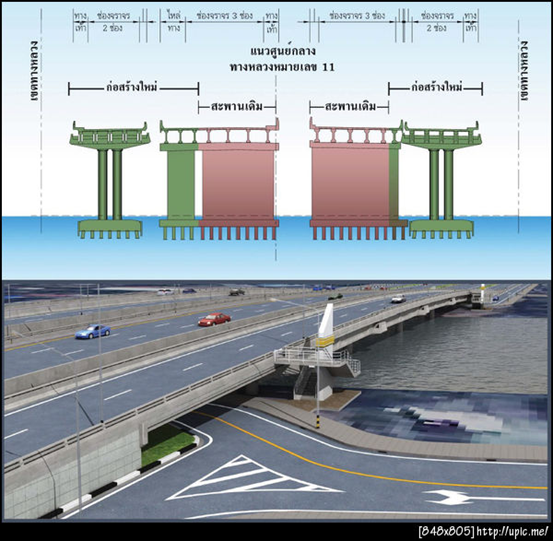
“At present they are giving nine metres for the slip road, but we need at least twelve metres; three for the footpath, two for the bicycle lane, and the rest for the cars,” he calculated. The professor’s proposal has been sent to the Department of Highways’ director, and he awaits the response. He also suggested the river front area be turned into a usable space and garden with a stairs leading from the pedestrian bridge down to the river. “Maybe we can even close off the bicycle lanes, the pedestrian lanes and one lane on the weekends and have a Walking Bridge! Why not turn the bridge into a tourist attraction?”
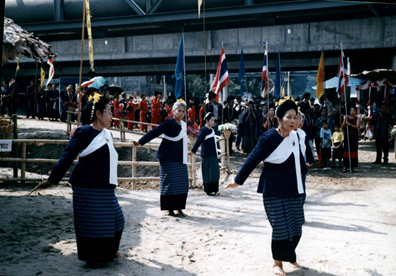
Former Chiang Mai governor Tanin Supasaen told Thairath Newspaper that the province would like to take a more people-centric approach to development, but projects like this seem contradictory to this statement. Chiang Mai’s Provincial Administrative Organisation is also bound from taking any action since the Department of Highways, rather illogically, reports directly to Bangkok. “This cannot be done unless the people of Chiang Mai express that they support the change,” Tanin said. In fact, the Highway Department’s response so far to complaints has been that this is a project for the whole of Thailand, not just for Chiang Mai. A response that has not gone down well with residents. Assoc. Prof Wassan remarked that the bridge’s current design is a repetition of how we have been building bridges for the past fifty years. But what citizens are asking for is not something so drastically different from what is already underway. Many cities around the world have designed new bridges with a greener and more people friendly result in mind. Singapore is still going strong with its Garden City concept launched 52 years ago, New York turned its elevated train tracks into a trendy green space named the High Line, London is about to build its very first 365 metre long garden bridge across the Thames, and Colombia regularly makes over 70 miles of Bogota’s streets car-free every Sunday for their people to bike, walk, jog, and exercise. In comparison to these full swing investments, donating two lanes for pedestrian and bicycle use seems relatively modest. “They do not have to adjust much of the design or budget at all, and it would become one of the Department of Highways’ masterpieces!” said the professor.
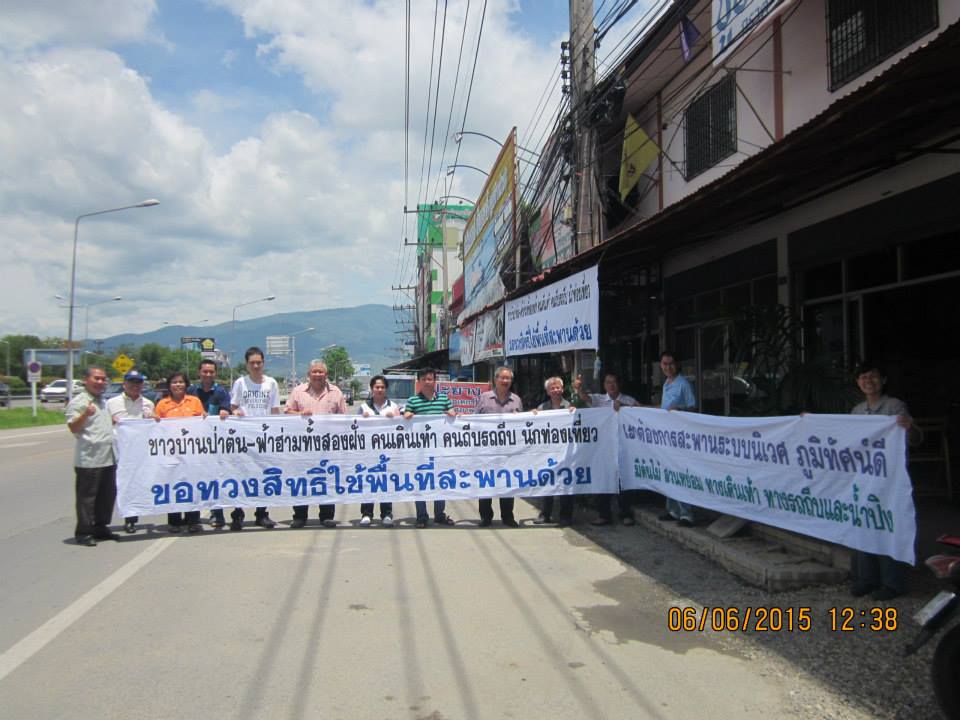
Let’s not forget that this construction project is only one of four projects that the Department of Highways is working on here in Chiang Mai. So how can we prevent this from happening again? “We will have to keep our eyes and ears open and everything in check,” he said. “The Department of Highways’ public hearings need to be conducted better and fully inform people about each projects’ consequences,” added Wiramol. Most importantly, the Department of Highways needs a paradigm shift. Road construction today is no longer just about managing the traffic, but also about creating a structure that serves the surrounding community, environment, and culture. To show your support for modifications of the Department of Highways’ construction plan, become friends with the ‘Sapan Niwes’ group here!